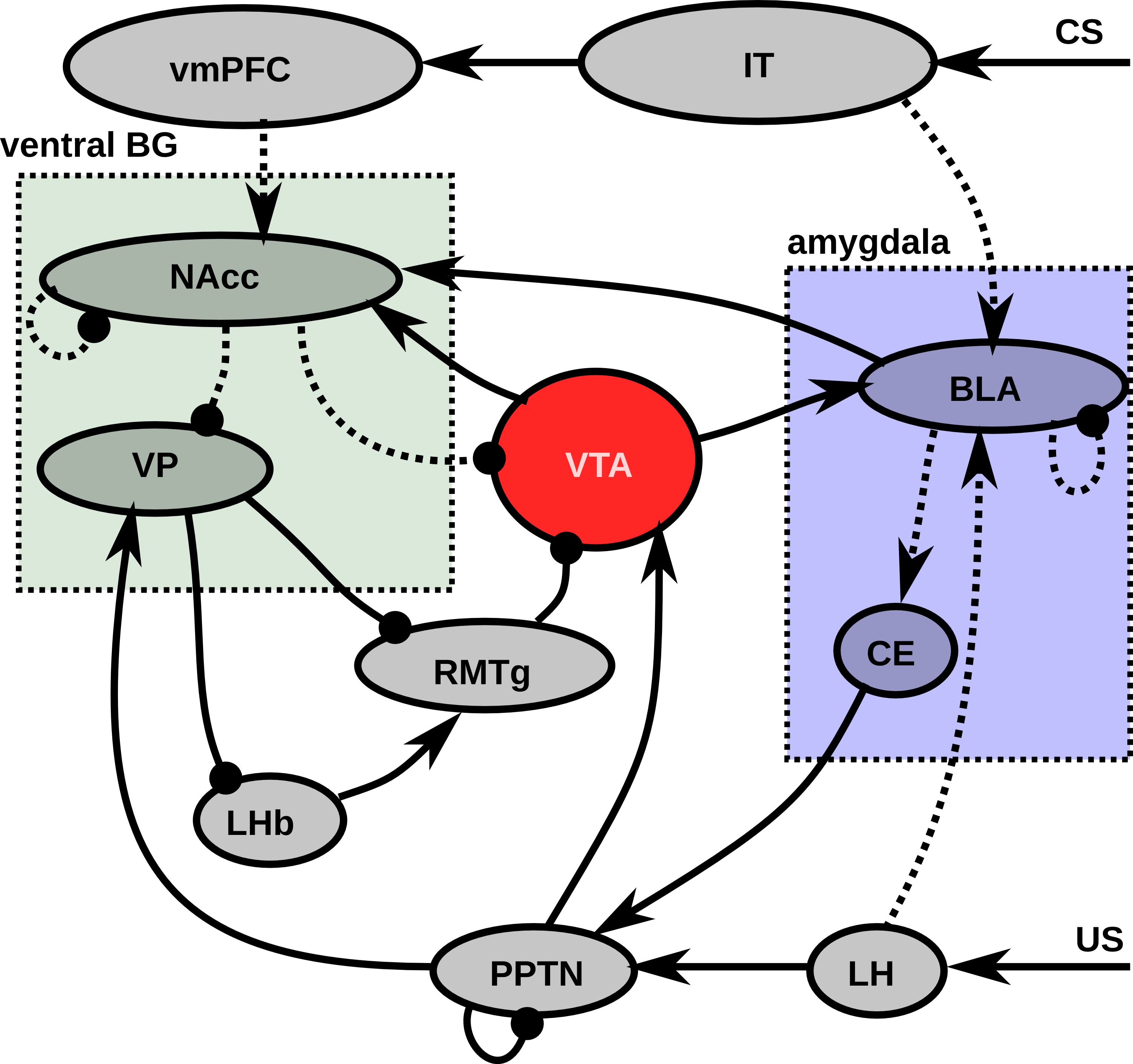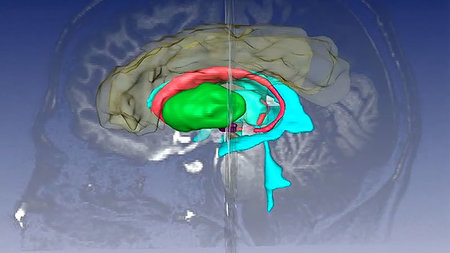Dopamine, rewards
The dopaminergic system is composed of the ventral tegmental area (VTA) and the substantia nigra pars compacta (SNc). The neurotransmitter dopamine (DA) released by neurons in these two small areas exerts a strong influence on neural excitability and plasticity in many brain areas: mostly the basal ganglia (BG), but also the prefrontal cortex, the hippocampus or the amygdala.
A striking feature of VTA cells is their response during classical (or Pavlovian) conditioning, as observed by Schultz et al (1998). Early on, VTA cells respond phasically (a burst) to unconditioned stimuli (US, or rewards in operant conditioning). Gradually during learning, the amplitude of this response decreases, replaced by a response to the conditioned stimuli (CS) which are predictive of reward delivery. Moreover, if a reward is predicted by the CS but omitted, VTA cells show a brief depression of activity (a dip) at the time where the US was expected. This pattern resembles the temporal difference (TD) error signal used in reinforcement learning, what generated multitudes of models based on that analogy.

What remains unclear is how VTA cells access information about the US, the CS and more importantly the time elapsed since CS onset. The goal of this research project is to investigate the mechanisms by which VTA is able to exhibit these properties, by looking at the afferent system to VTA. VTa indeed receives information from many brain areas, either directly as the rostromedial tegmental area (RMTg), the pedunculopontine nucleus (PPTN) or the nucleus accumbens (NAcc), or indirectly as the amygdala, the lateral habenula (LHb), the ventral pallidum (VP) or the ventromedial prefrontal cortex (vmPFC).
Associated projects
DFG research group "Dopaminerge Einfluesse auf subkortikale Oszillationen beim Belohnungslernen". DFG HA2630/7-2 (2014-2016).
DFG project "The cognitive control of visual perception and action selection". DFG HA2630/4-2 (2011-2014).
Selected Publications
Julien Vitay (2017).
On the role of dopamine in motivated behavior: a neuro-computational approach.
Habilitation (Technische Universitaet Chemnitz).
Julien Vitay and Fred H. Hamker (2014).
Timing and expectation of reward: a neuro-computational model of the afferents to the ventral tegmental area.
Frontiers in Neurorobotics. 8:4
doi:10.3389/fnbot.2014.00004
Julien Vitay and Fred H. Hamker (2007).
On the role of dopamine in cognitive vision.
In: Paletta, L., Rome, E. (eds) Attention in Cognitive Systems. Theories and Systems from an Interdisciplinary Viewpoint. WAPCV 2007. Lecture Notes in Computer Science(), vol 4840. Springer, Berlin, Heidelberg
doi:10.1007/978-3-540-77343-6_23





